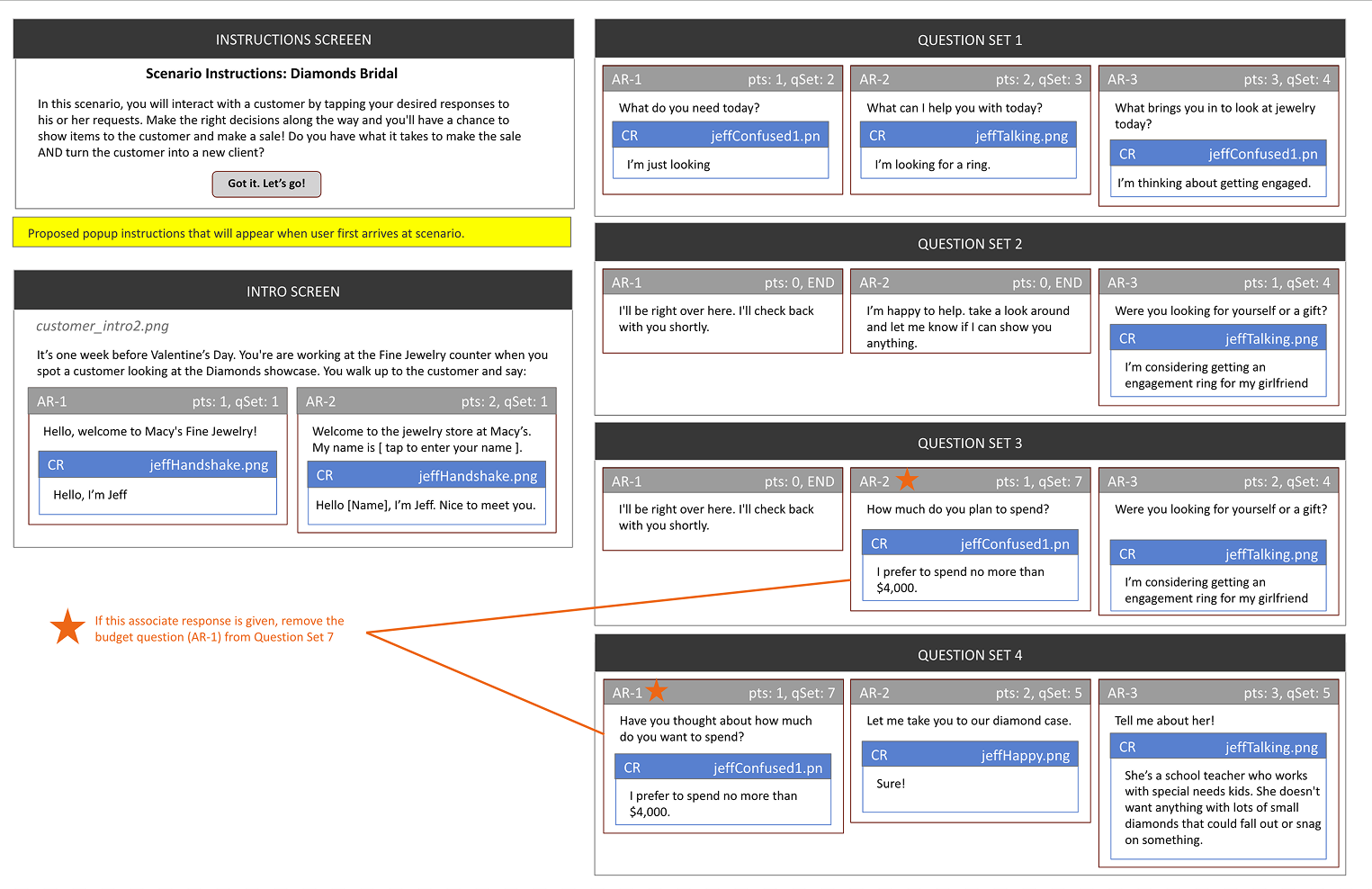Macy's Fine Jewelry Mobile Training Modules
Roles: Project Management, UX Research, Design, Instructional Design, Development, Motion Graphics
While working as a consultant under my LLC (Bill Jordan Design, LTD), I was hired by Macy's to create a series of mobile training modules for the Fine Jewelry department.
The goal of these modules was to provide highly engaging interactive experiences that would teach new sales associates about the various Fine Jewelry products available at Macy's -- and how to best communicate with customers about them.
The modules were designed to be used on mobile devices, making it easy for sales associates to access them while on the sales floor.
I acted as a one-person development shop, creating these modules from discovery to delivery.
Here's an overview of what I did:
- Led discovery sessions with SMEs to gather content and business goals
- Conducted user research with associates and customers on the sales floor
- Designed consistent and effective visual language for all modules
- Created a custom "Choose your own adventure" workflow that led sales associates through scenario-based interactions with virtual customers, complete with dynamic scoring and situational feedback
- Created custom drag & drop and slider interactions
- Created custom animations and instructional videos using After Effects
- Developed the modules using Angular and PhoneGap


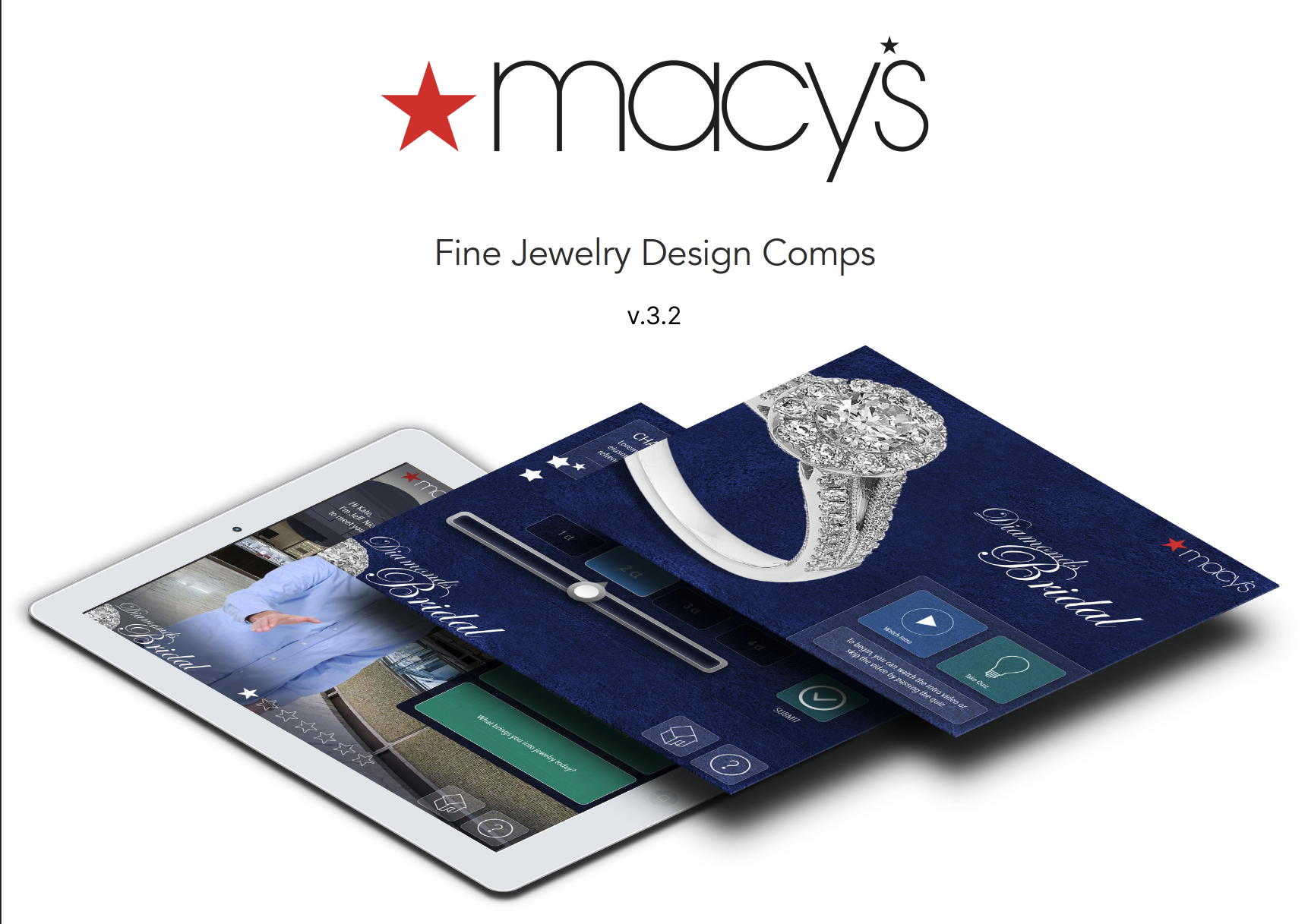
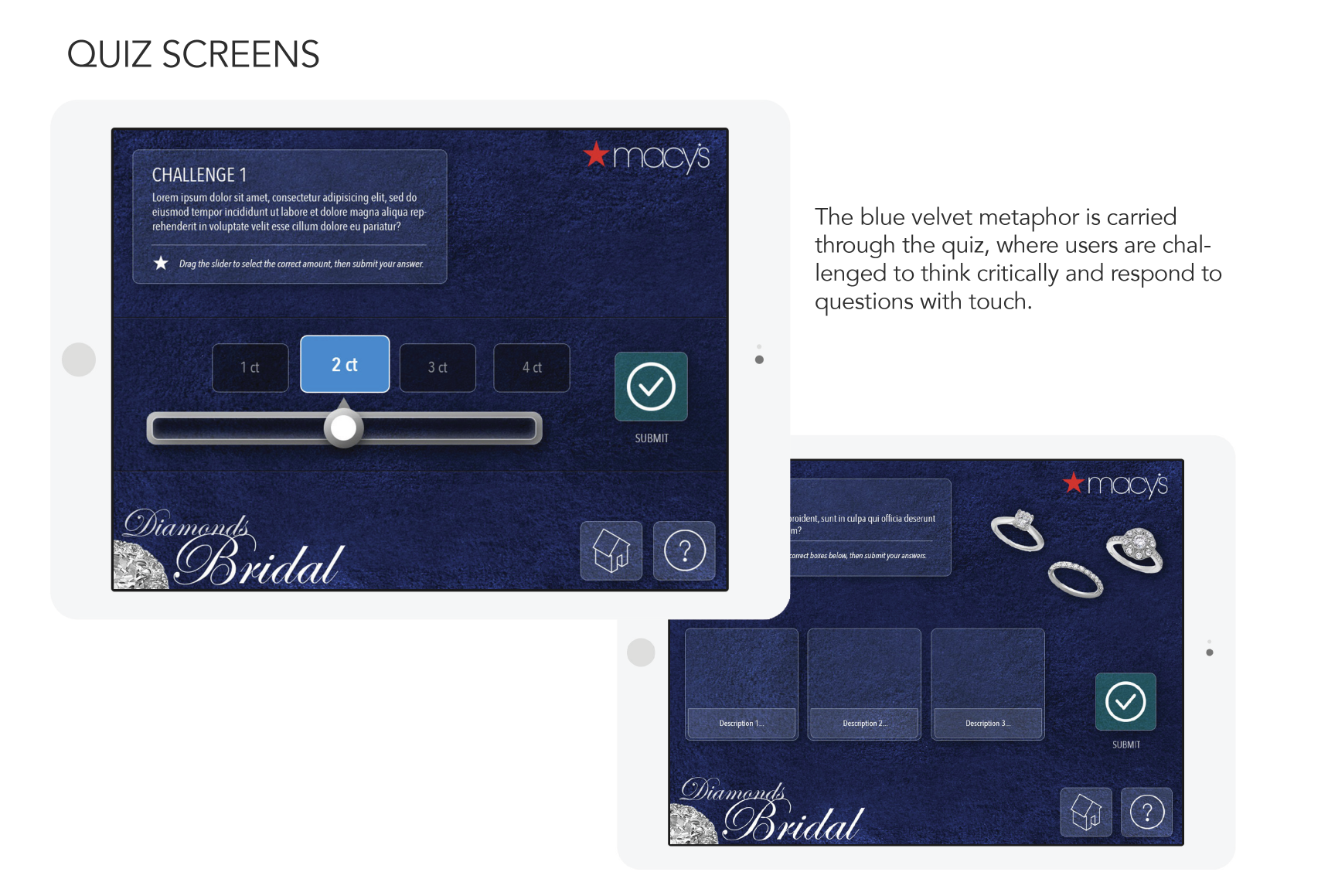
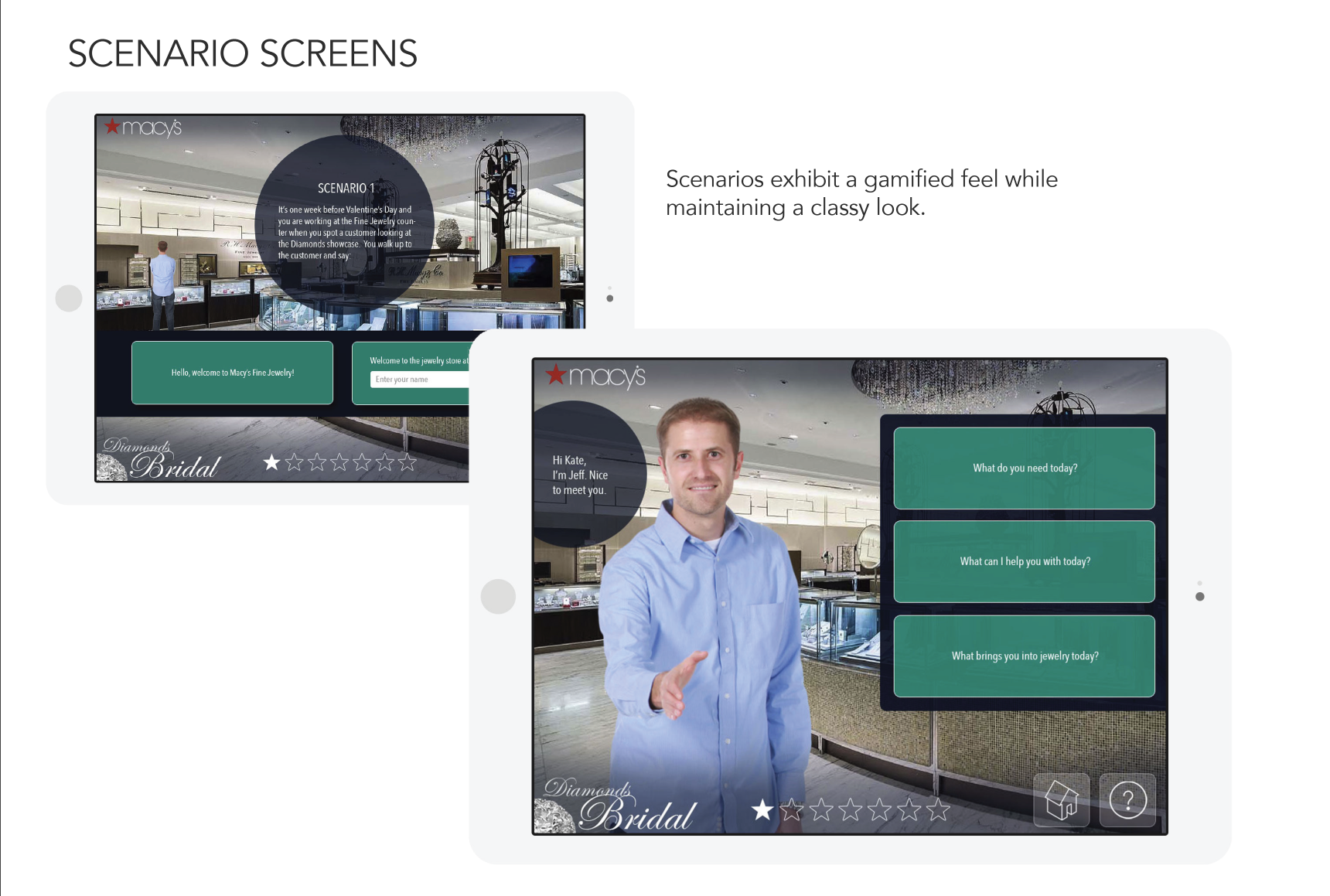
Choose Your Own Adventure
At the heart of each of these modules was a series of interactive scenarios that featured virtual customers. I based them on the "Choose Your Own Adventure" books I loved as a kid. Each scenario involved branching paths that led the sales associate through a series of interactions with the customer. The associate would have to make choices about how to respond to the customer's needs and preferences by following nuanced best practices.
Each choice affected the associate's overall score and the outcome of the interaction. Multiple paths could be taken, leading to different outcomes and feedback each time. There were a variety of factors that could affect the outcome, including the customer's mood, which was affected by the associate's choices. The customer's mood was represented by a dynamic "happiness meter" and influenced the associate's ability to upsell.
Detailed feedback was provided at the end of each interaction, including a breakdown of the associate's choices and how they affected the outcome. This feedback was designed to be actionable and provide a learning opportunity for the associate. If the outcome was below a certain threshold, the associate would be encouraged to try again.
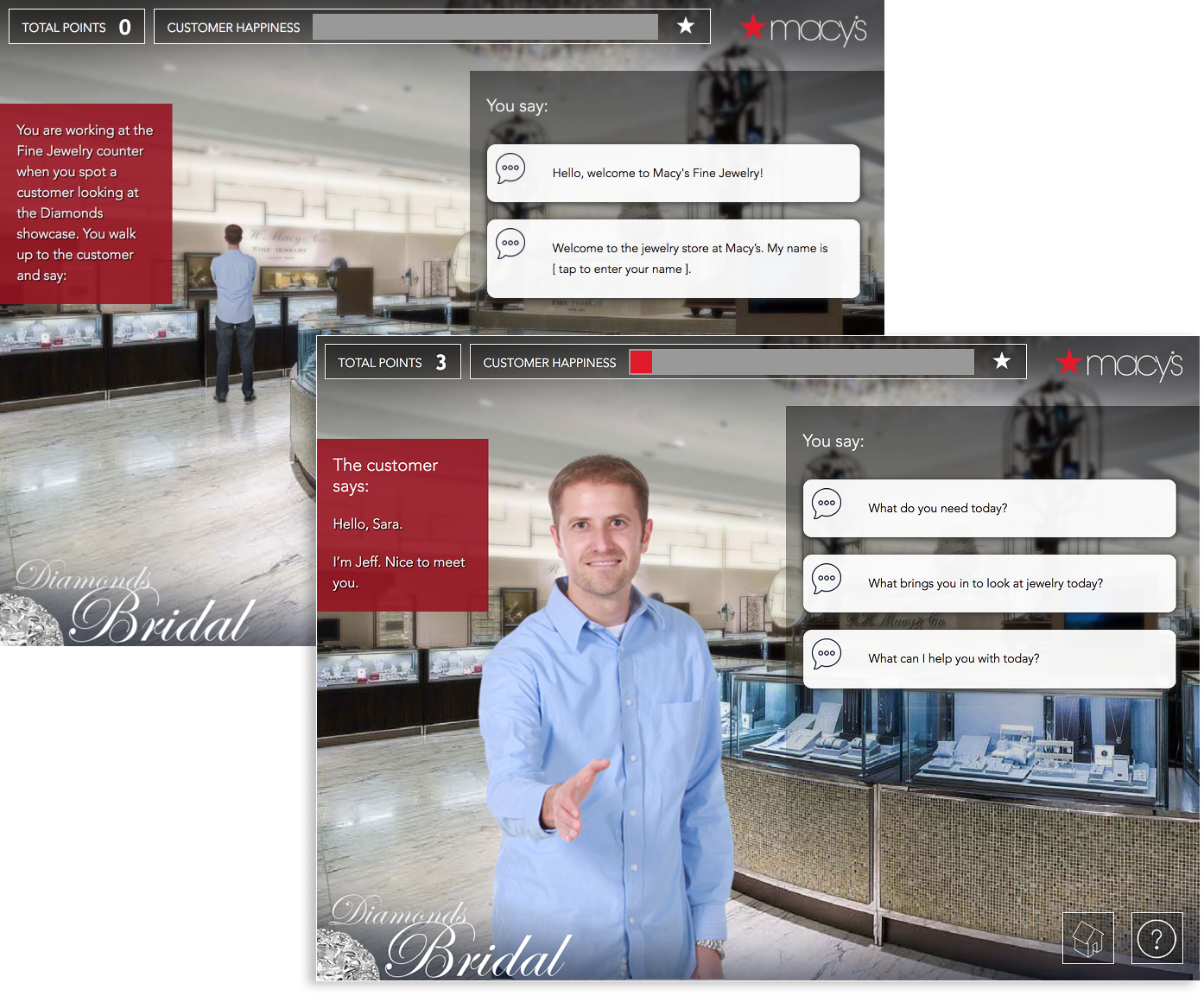
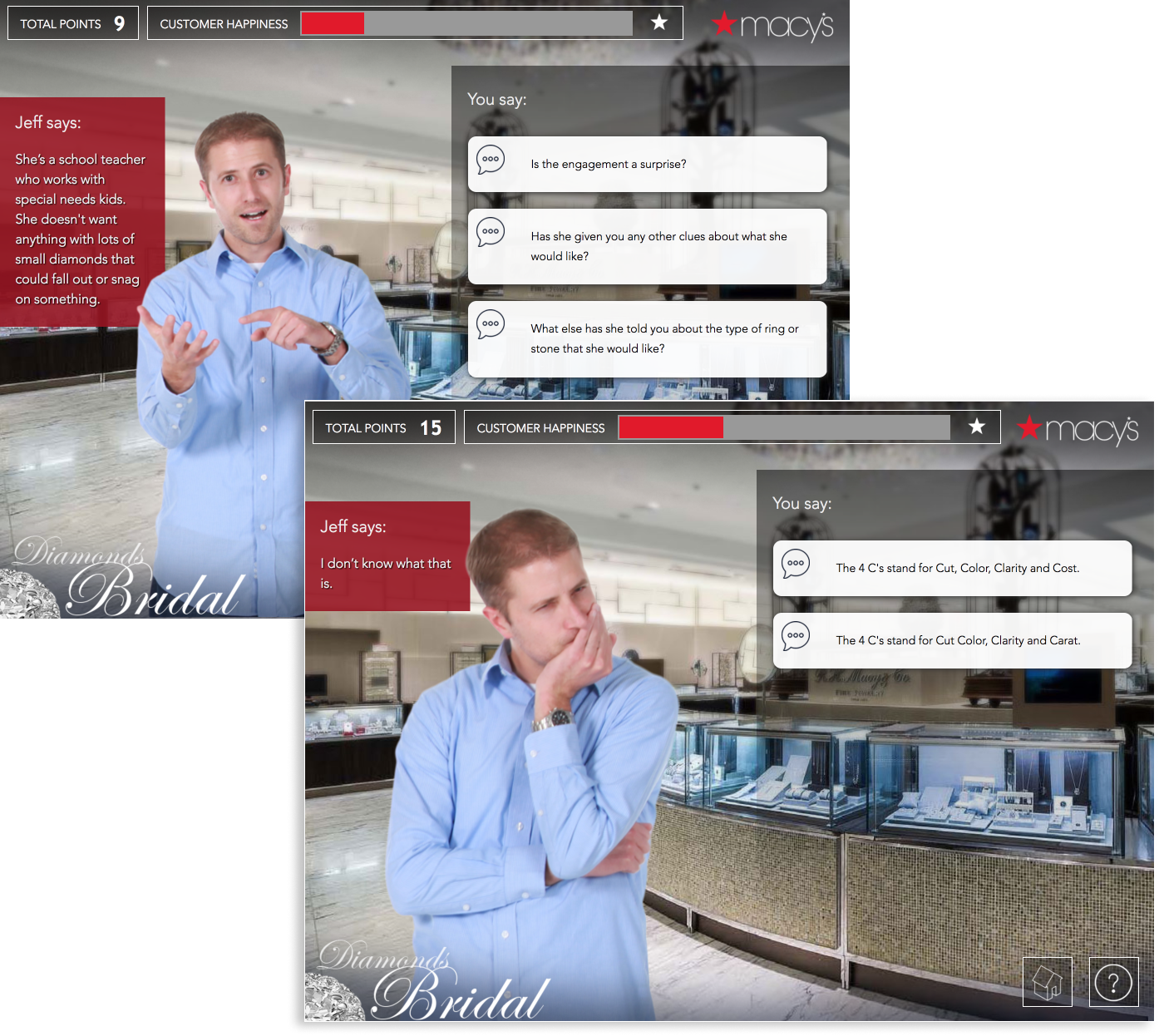


Modules in Motion
There were 5 modules in all: Diamonds Bridal, Gemstones, Pearls, Precious Metals and Watches. In addition to the scenario-based interactions, each module featured an instructional video, which I created using Photoshop & After Effects.
Each video began with a comprehensive storyboard that we used to refine the script and plan the animations. I then created the animations in After Effects, using a combination of custom illustrations, stock images and motion graphics. The final videos were integrated into the modules and served as a visual introduction to the content.
